Guatemala Hiking Trail Locations, we created for travelers and hikers after hiking around Guatemala we have found few hiking trails on earth that can rival the beauty of Guatemala hiking trails. And once you have seen it for yourself, we think you will agree. Many of the hiking trails follow the traditional Mayan trails and trade routes of the indigenous culture that crisscross Guatemala.
Guatemala Hiking trails follow the trade routes that not only supplied physical goods to the area but also facilitated the movement of people and ideas throughout Mesoamerica. Trade was a key component of Maya society and in the development of the Maya civilization. The cities that grew to become the most important usually controlled access to vital trade goods or portage routes.
Guatemala Hiking Trail locations can be difficult to find and for that reason, we compiled a list of Hiking Trails throughout Guatemala based on working with the indigenous people who live in these areas and our exploration and experience of hiking these regions of Guatemala.
We have found spectacular hiking trails in Lake Atitlan, Antigua Guatemala, El Mirador Tikal, and the Rio Dulce River in the area of Livingston Guatemala.
The following is a list of our favorite hikes. These trails are suitable for all levels of hikers from novice to advanced. No special equipment is required.
Guatemala Hiking Trail Locations Antigua Guatemala Maps
Guatemala Hiking Trail Locations Antigua
When you think about Antigua Guatemala, what comes to mind first?
Its well-preserved Spanish Baroque-influenced architecture, ruins of colonial churches, Semana Santa celebration, or as a UNESCO World Heritage site.
Antigua is not a city known for its hiking, but it should be. History abounds throughout Antigua as does hiking.
Dominating the landscape of Antigua Guatemala is Volcan de Agua an absolute must climb for hiking enthusiast. The volcano is located approximately four to six miles from the city of Antigua.
The agricultural mountain village of Santa Maria de Jesus is located at its base in the foothills at an elevation of 6,791 feet above sea level.
The elevation at the summit of Volcan de Agua is 12,336 feet above sea level.
For transportation to get to the trail take a van located at the back of the Antigua market to the main plaza in the village of Santa Maria de Jesus. The cost should be around Q10.
While all hiking levels can climb Volcan de Agua it can be challenging for beginners. If the altitude doesn’t leave you the breathless, the steep climb and the view will.
The attached map shows the paths to the trails that leads you up Volcan de Agua.
The trail starts at the cemetery. As you follow the trail it takes you through local farming areas of coffee and corn fields, meadows, and steep switchbacks. As you reach the end of the trail, you are either treated with a spectacular view of Volcano Fuego and Volcano Pacaya or an opportunity to be surrounded by clouds atop the volcano.
Average hiking time for the ascent and descent is approximately 5 hours. Currently there is no charge and no permits required to climb Volcan de Agua.
Vans run on a regular basis from Santa Maria de Jesus to Antigua. They stop at 6:00pm.
What To Bring On The Hike
Good hiking shoes are recommended, water, snacks, and sun protection (hat, shades, sunscreen).
Start early and add an extra hour for transportation from Antigua to Santa Maria de Jesus.

Shuttle Drop Off
Trail to begin your Hike
Guatemala Hiking Trail Locations Lake Atitlan Guatemala Hiking
Guatemala Hiking Trails Lake Atitlán the Highlands of Guatemala
Lake Atitlan, Guatemala is located in the highlands of Guatemala and provides some of the most majestic scenery in the world. It has everything, beautiful mountains with three looming volcanoes, a stunning lake, and striking green vegetation engulfed in colorful tropical flowers.
Lake Atitlan is technically an endorheic lake, feeding into two nearby rivers rather than draining into the ocean. It is shaped by deep surrounding escarpments and three volcanoes on its southern flank.
If you are looking for adventure, hiking Lake Atitlan will provide that. With a variety of distinct climate zones, fascinating geology, incredible hiking and nearly-perfect weather year-round, Lake Atitlan has it all.
While Lake Atitlan is incredible in a wide angle view, the area offers a lot more when it is explored up close and by foot. With a lot of things to do in Lake Atitlan hiking is a must. So here are three amazing Lake Atitlan hiking trails to explore.
Guatemala Hiking Trail Locations & Maps Godinez to Santa Catarina Palopo
The Godinez to Santa Catarina Palopo Hike is ideal for travelers eager to combine mind-blowing scenery, wildlife, terraced farming, and an authentic experience.
The hike starts at the summit at an altitude of approximately 6,700 feet above sea level and winds its way down descending through the mountains, alpine forest, wild flower plateaus, terraced fields, and through the village of Santa Catarina Palopo’s built into the mountain side. It takes anywhere from two and a half to three hours depending on your fitness level. The hike is moderately demanding, the four miles remains within the reach of most reasonable fit travelers.
From Panajachel take a van located at the Panajachel market to Godinez, about a 30 minute ride. The cost is Q6. The trailhead is located one mile outside the village of Godinez at the Mirador Mario Mendez Montenegro. From the mirador you have a panoramic view of Lake Atitlan including the villages of San Lucas Toliman, San Antonio Palopo, Santa Catarina Palopo, Santa Cruz, San Juan La Laguna, San Pedro La Laguna, and Panajachel.
The hike ends in the village of Santa Catarina Palopo where you can take a pickup back to Panajachel. Pickups, called collectivos, are the main form of transportation used by the locals to get from Santa Cataraina Palopo to Panajachel. The cost is Q3.
What To Bring On The Hike
Good hiking shoes are recommended, water, snacks, and sun protection (hat, shades, sunscreen).
We recommend starting the hike early morning around 7:00am to beat the heat and have the best views of the lake.
Average hike time is 3 hours. With transportation from Panajachel to Godinez and return transportation from Santa Catarina Palopo to Panajachel plan on 4 hours total time.
Guatemala Hiking Trail Locations & Maps Santa Catarina Palopo to Panajachel
If you are not acclimated to the altitude, or not a regular hiker, this Santa Catarina Palopo to Panajachel hike will be a real workout and you may find it more challenging with a 1,000 foot elevation ascent. If you are bringing kids we recommend that they are 10 years or older.
The hike begins with a climb up a steep staircase where a new trail has been cut. As you ascend the trail opens up to beautiful colors, landscape and the solemn and majestic presence of three extinct volcanoes— Atitlan, Toliman, and San Pedro.
Lake Atitlan is a masterpiece of the natural world. You could spend the entire morning staring into the volcanoes reflecting in the waters. The untouched and picturesque trail follows the hillside high above the road to Panajachel.
The hike takes about 4 hours with varying terrain, caves and some cliffs.
What To Bring On The Hike
Good hiking shoes are recommended, water, snacks, trekking poles may be beneficial, and sun protection (hat, shades, sunscreen).
We recommend starting the hike early morning around 7:00am to beat the heat and have the best views of the lake.
Average hike time is 4 hours.
Guatemala Hiking Trails Locations & Maps San Pedro to San Marcos
The village of San Pedro is directly across Lake Atitlan from the village of Panajachel. In order to start this hike you will need to take a boat from Pana to San Pedro.
This hike begins at lake level at an altitude of 5,125 feet above sea level and follows the road that winds around the northwest side of Lake Atitlan through a variety of habitats: dense forest, coffee fincas, and along the lakeshore.
There is little elevation gain along this road and this hike is appropriate for all ages and fitness levels taking approximately two and half hours as it introduces you to the villages of San Pedro La Laguna, San Juan La Laguna San Pablo La Laguna, and finishes in San Marcus La Laguna. Not only does it provide for great views of the lake it also gives you a feel for village life.
What To Bring On The Hike
Good hiking shoes are recommended, water, snacks, and sun protection (hat, shades, sunscreen).
We recommend starting the hike early morning around 7:00am to beat the heat and have the best views of the Lake.

Godinez beginning of the hike
To the Mirador for the lookout
Onion Fields Above Santa Catarina
End of Hike in the Village of Santa Catarina
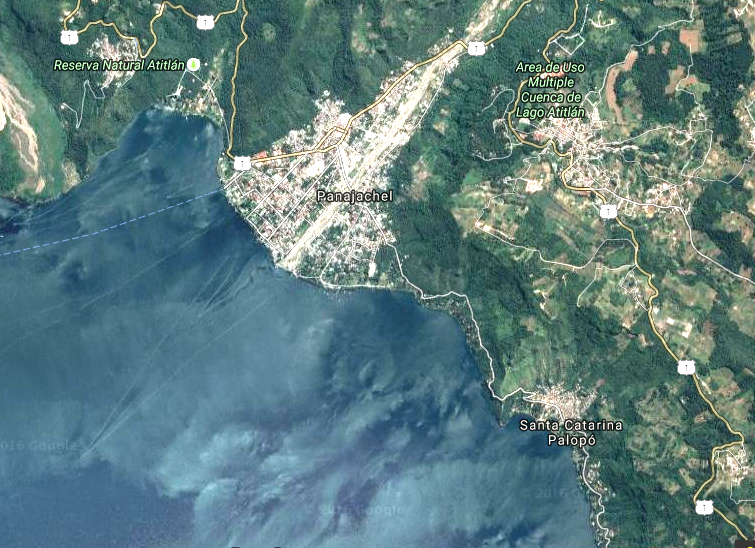
Hike begins at Santa Catarina
Hike End in Panajachel
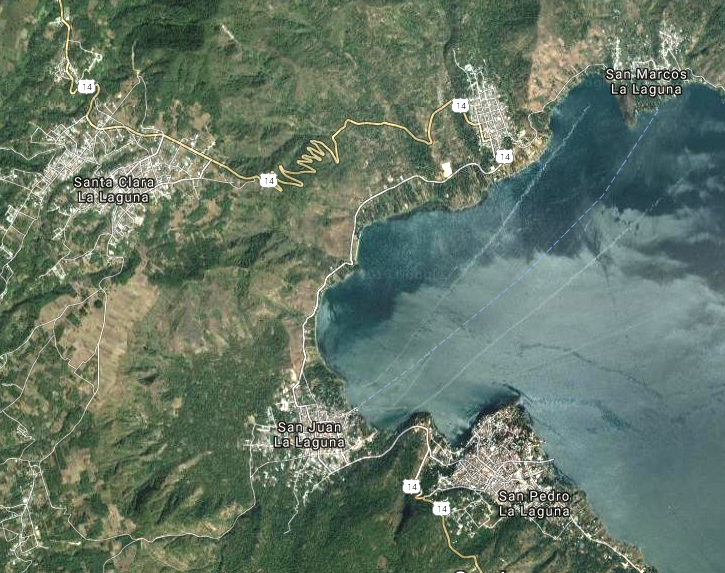
Hike Begins in San Pedro
Hike ends in San Marcos
Guatemala Hiking Trail Locations & Maps Livingston
Guatemala Hiking Trails Locations & Maps. Dulce River, meaning Sweet River, is a river in Guatemala, completely contained within the department of Izabal. It is part of a lake and river system that has become a popular cruising sailboat destination. The river begins at the point where it flows out of Lake Izabal. At the entrance to the river there is a small Spanish colonial fort, the Castillo de San Felipe de Lara, built to stop pirates entering the lake from the Caribbean when this part of Central America was an important shipping staging point.
Livingston is the name of a town in Izabal Department, eastern Guatemala, at the mouth of the Río Dulce at the Gulf of Honduras. The town serves as the municipal seat of the municipality of the same name. It was Guatemala’s main port on the Caribbean Sea before the construction of nearby Puerto Barrios.
Guatemala Hiking Trails Locations & Maps Rio Dulce River the Canyons of Livingston Guatemala
Livingston is a town where wonderful discoveries still await those who venture off the tourist trails. So take the road less travelled and discover a different side to Guatemala in Livingston.
Livingston is incredibly different than the rest of Guatemala. It is a small community of Garifuna people who are mixed-race descendants of West African, Central African, Island Carib, and Arawak people. Add to that the Livingston can only be accessed by boat and you find a thriving population that is much more like Belizean Caribbean than the Mayan culture found throughout Guatemala.
Livingston offers Caribbean beaches, entrance to the Rio Dulce and the cliffs that guard the entrance of the Rio Dulce River to the Caribbean Coast line of Guatemala.
The easiest way to reach Livingston is to take a car or bus from Guatemala City to Puerto Barrios. For those driving themselves take the Carretera al Atlántico (CA-9) out of Guatemala City. Puerto Barrios is the end of the line some 295km (183 miles) to the northeast.
There is also coach bus service between Guatemala City to Puerto Barrios. Litegua Bus (502-7948-1002 or www.litegua.com) has direct daily service between Guatemala City and Puerto Barrios. The Litegua terminal in Guatemala City is at 6a Calle and 9a Avenida, Zona 1.
The bus station in Puerto Barrios is at the corner of 6a Avenida and 9a Calle. The trip takes about 5 hours each way. We recommend taking a Litegua “executive” or “deluxe” bus, which are more modern, comfortable, and faster.
Once in Puerto Barrios take a boat to Livingston. Livingston can only be accessed by boat.
The Hotel Ríos Tropicales in Livingston Guatemala is a great family run hotel and hostel and can make arrangements for you to travel from Livingston to the Rio Dulce.
Traveling up the river from Livingston there are huge canyons as the river narrow, along the route there river caves, waterfalls, ruins, and jungle to explore. We recommend that you hire a guide.
What To Bring On The Hike
Good hiking shoes are recommended, water, snacks, and sun protection (hat, shades, sunscreen).
We recommend starting the hike early morning around 7:00am to beat the heat and have the best views of the Lake.

Take a Boat from Livingston to head up river.
Heading into the Canyons
Tikal El Mirador Guatemala Hiking Trail Locations
Guatemala Hiking Trails Locations & Maps El Mirador
El Mirador is truly the lost Mayan city, a huge site (some say the largest Mayan city in existence) in the jungle of northern Guatemala. It is in the Mirador Basin, a vast area of virgin rain forest which also contains dozens of Mayan ruins including several large cities, the largest of which is the one known as El Mirador (which means “The Lookout”).
The site is known as the cradle of Mayan civilization and is home to several huge structures and many square miles of unrestored mounds and pyramids in the jungle, covered in vegetation. It has been called the oldest and most extensive Mayan site in the world, covering 38 square miles, larger than the city of Los Angeles.
Guatemala Hiking Trail Locations & Maps El Mirador Tikal
Tikal is the most famous and well known Mayan Ruin site in Guatemala if not most of Central America.
North of Tikal is the El Mirador site, which is a site that has yet to be explored or developed as a tourist location.
However for those that are true explorers and adventurers this is the ultimate hiking experience.
This is a 3-day pack by mule and horse back to the site itself.
There are no facilities, along this trail. Once you reach the site you are surrounded with jungle and in the center of what some say is the largest Mayan city in existence.
If you plan to spend a couple of weeks in Guatemala we can make arrangements for small groups to make the trek back into this undeveloped Mayan site covering 38 square miles.
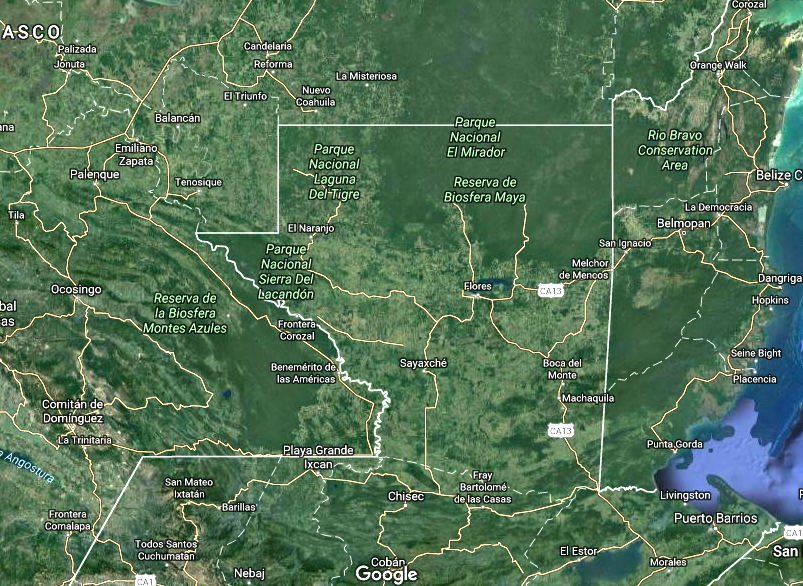
El Mirador
RoD
Guatemala Hiking Trail Locations & Maps Facts
Guatemala is a country in Central America. It is known for its mixed culture, a product of both Mayan and Spanish cultures, from the colonial period. Guatemala is known for its ever-changing weather, a product of the mountain range which crosses the center of the country. Guatemala has many languages, a total of 23. Because of its natural beauty, it is a popular tourist destination.
Guatemala Hiking Trails Locations & Maps
Volcán de Agua (also known as Hunahpú by Mayans) is a stratovolcano located in the department of Sacatepéquez in Guatemala. At 3,760 m (12,340 ft), Agua Volcano towers more than 3,500 m (11,500 ft) above the Pacific coastal plain to the south and 2,000 m (6,600 ft) above the Guatemalan Highlands to the north.
Lake Atitlán Hiking is technically an endorheic lake, feeding into two nearby rivers rather than draining into the ocean. At 5,125 feet above sea level the altitude does effect hikers endurance. Even those in the best shape. Waiting a few days for acclimation will help if you plan long Upper Rim Hikes. It is shaped by deep surrounding escarpments and three volcanoes on its southern flank.
Guatemalan Highlands is an upland region in southern Guatemala, lying between the Sierra Madre de Chiapas to the south and the Petén lowlands to the north. The highlands are made up of a series of high valleys enclosed by mountains. The local name for the region is Altos, meaning “highlands”, which includes the northern declivity of the Sierra Madre. One large river, the Chixoy or Salinas River, escapes northwards towards the Gulf of Mexico.
Pacaya Volcano is a popular tourist attraction. Pacaya lies 30 kilometers (19 miles) southwest of Guatemala City and close to Antigua. The volcano sits inside the Escuintla Department.
So far, the last activity reported has been the eruption that peaked on March 2, 2014 causing ash to rain down in Guatemala City, Antigua and Escuintla.
San Pedro Volcano (or Las Yeguas) (3,020 metres (9,908 ft)) is a stratovolcano on the shores of Lago de Atitlán, in the Sololá Department of northern Guatemala. At its base is the village of San Pedro La Laguna.
Tikal is a large archaeological site in the Guatemalan department of Petén. During the Classic Period it was one of the largest and most important of the Mayan cities. Today it’s one of the most fascinating and enjoyable of the Mayan sites to visit, largely due to its remoteness, but also its jungle setting. Some of the temples are still being uncovered, and you can watch archaeologists busy at work. It was designated a World Heritage Site by UNESCO in 1979.
Dulce River (Spanish: Río Dulce, or “Sweet River”) is a river in Guatemala, completely contained within the department of Izabal. It is part of a lake and river system that has become a popular cruising sailboat destination. The river begins at the point where it flows out of Lake Izabal. At the entrance to the river there is a small Spanish colonial fort, the Castillo de San Felipe de Lara, built to stop pirates entering the lake from the Caribbean when this part of Central America was an important shipping staging point.
Livingston is the name of a town in Izabal Department, eastern Guatemala, at the mouth of the Río Dulce at the Gulf of Honduras. The town serves as the municipal seat of the municipality of the same name. It was Guatemala’s main port on the Caribbean Sea before the construction of nearby Puerto Barrios.

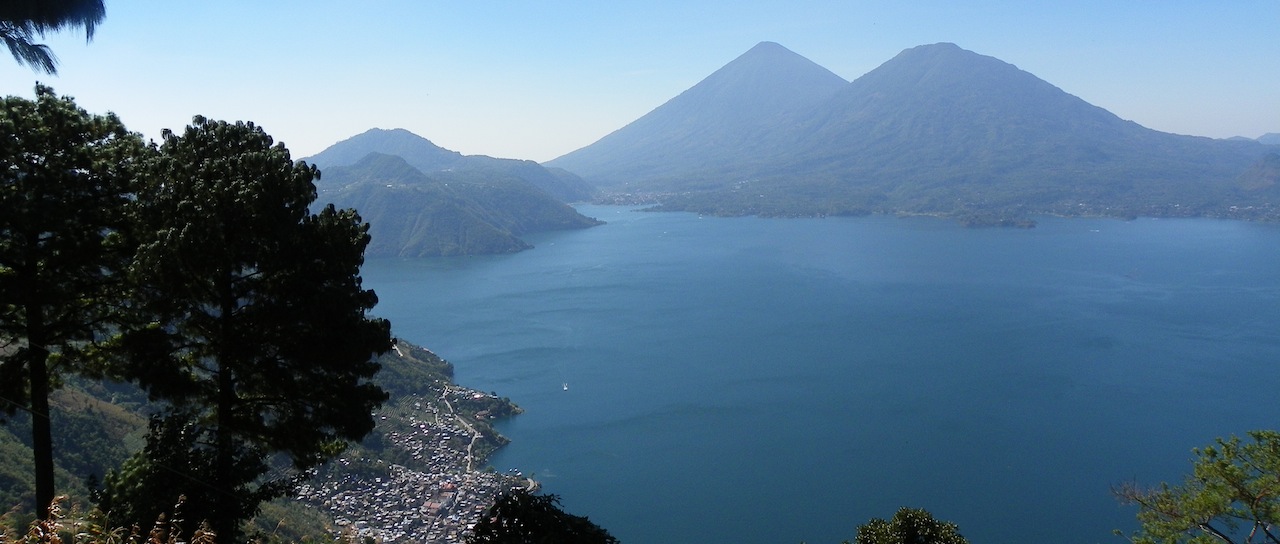
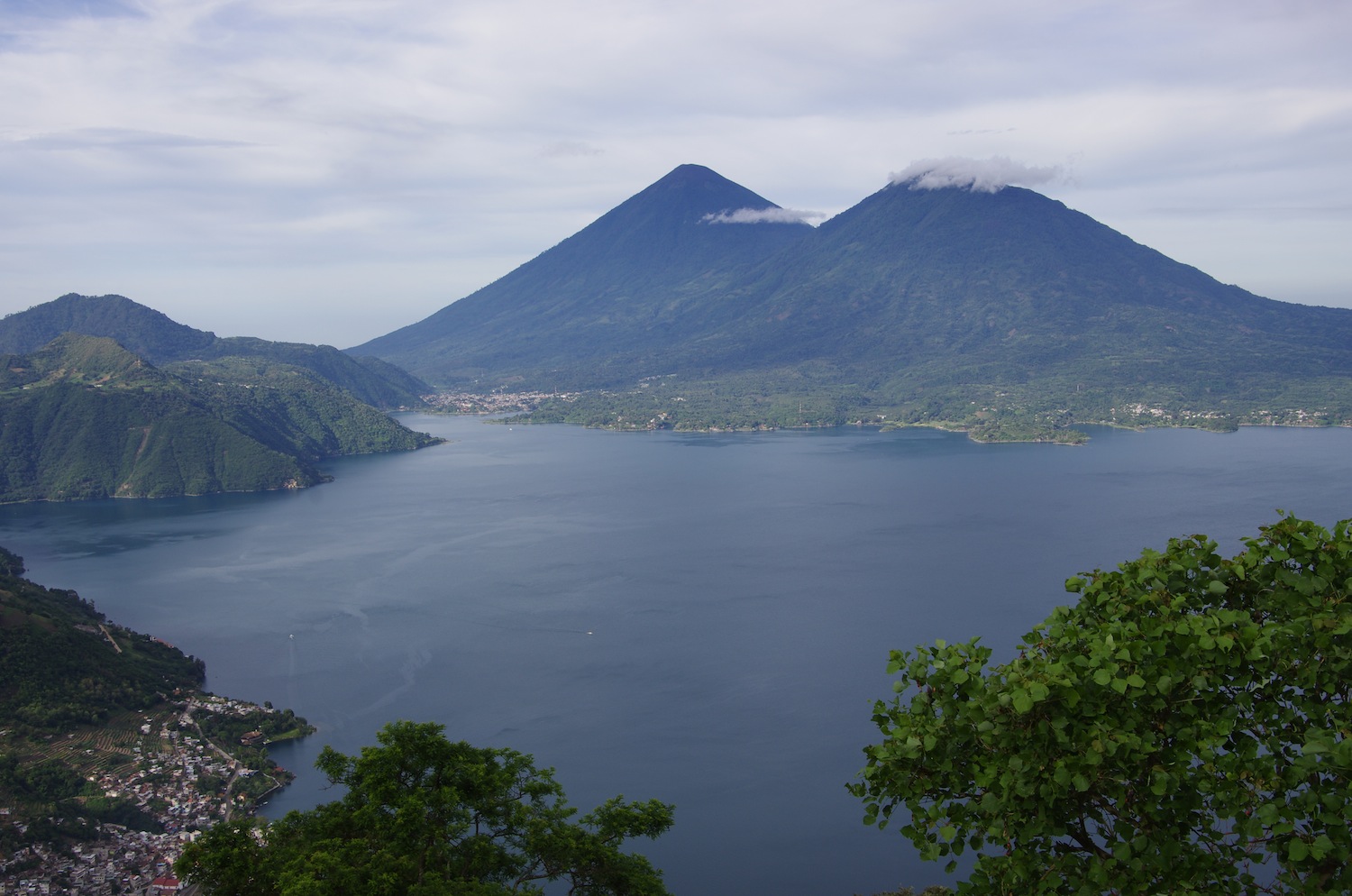
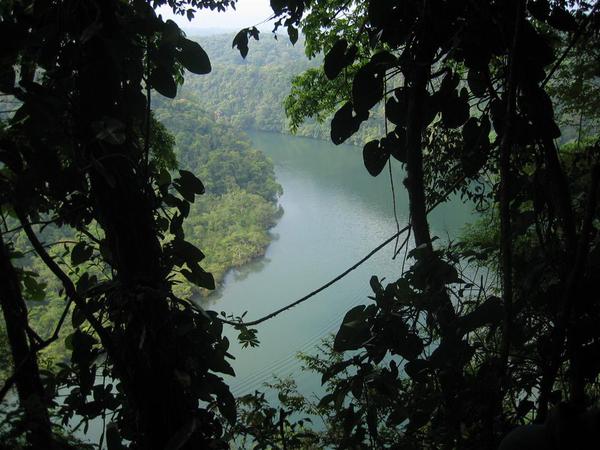

 Lake Atitlan Tours
Lake Atitlan Tours Joan Cass
Joan Cass